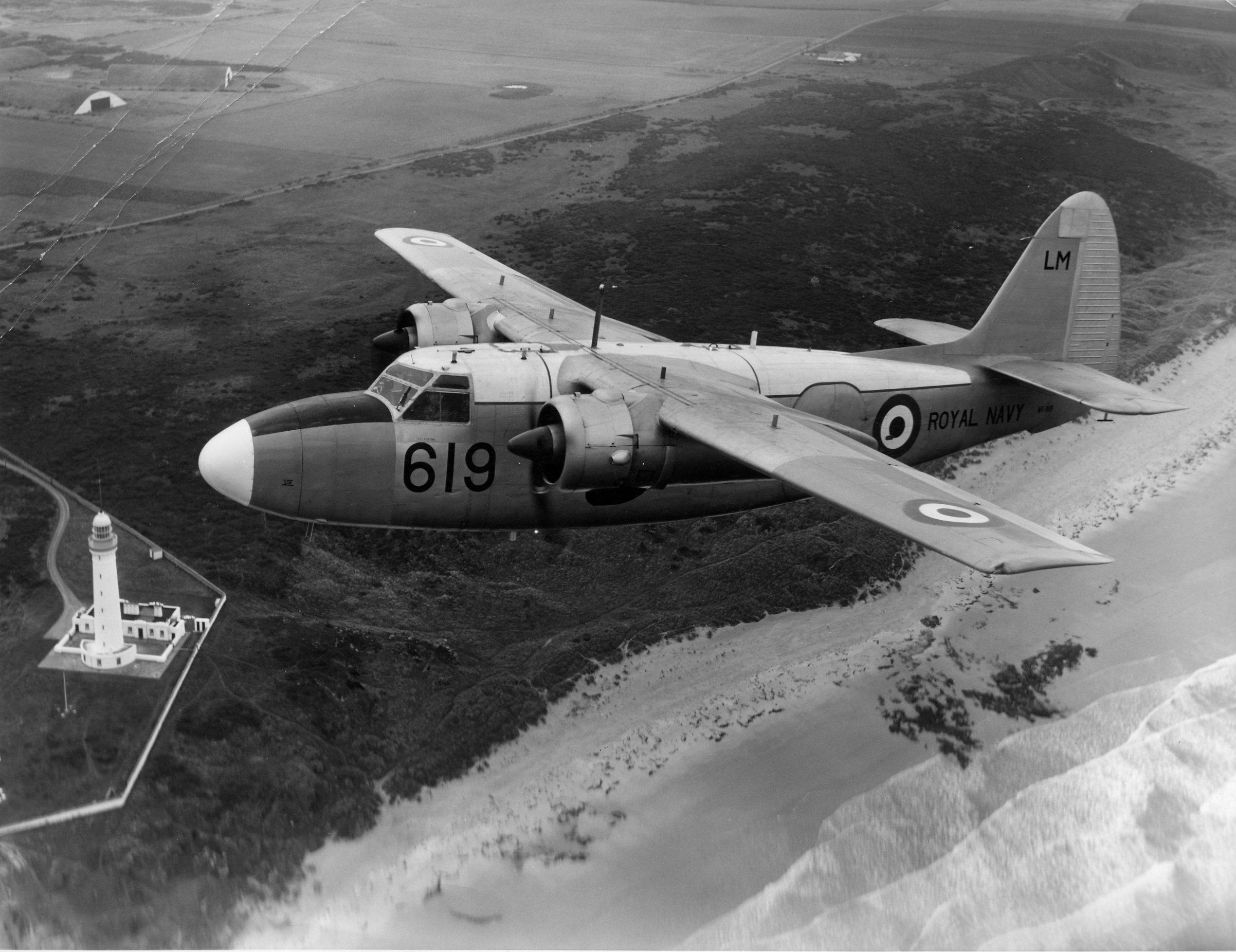REMEMBERING BOB WOOLLEY
By Mark Woolley
Part 2 December 1964 to August 1968
Lt. Woolley at ease in the cockpit of Sea Vampire no. XJ769/678 (750 Squadron, RNAS Lossiemouth) on 11th November 1965 (© Crown Copyright)
Following my father’s return to the UK in November 1964 there was just about sufficient time to get married to Ingrid (the honeymoon would have to wait!) before undertaking a one month short maintenance course (SMAC4) flying Sea Devons with 781 Squadron down at RNAS Lee-On-Solent in December 1964. Following completion of the conversion course to flying twin piston-prop aircraft came an overseas posting to RNAS Halfar in Malta and the Observer School of 750 Squadron. This primarily involved flying up to 4 trainee observers in Sea Princes whilst they received their initial training and also subsequently on a one to one basis in Sea Venoms. Sorties were flown to destinations as far afield as Decimomanu, Palma, Rome, Sicily and Tripoli.
Whilst the warm Mediterranean climate proved ideal for teaching observers to navigate, the sun didn’t always shine. On 12th February 1965, whilst descending through cloud in Sea Venom no. XG721 together with Midshipman Nocher, a bolt of lightning thumped a large hole through the radome damaging the radar equipment in the process. Fortunately there was no other damage and the aircraft was able to land safely.

Above: Sea Prince no. WF118 of 750 Squadron near RNAS Lossiemouth, 11th November 1965 (© Crown Copyright)
Following the return of Halfar to the RAF, the Squadron transferred up to Lossiemouth in July 1965 and two months later I arrived on the scene. In those days officers under the age of 25 were not entitled to married quarters and our first home together at Milltown was far from salubrious being two small caravans bolted together.
In January 1966 we all upped stumps once more, this time down to the very lovely Cotswolds. The posting with 750 Squadron had been considered a success and, having clocked up over 1000 flying hours, it was now time for Lieutenant Woolley (as he was by then) to learn how to pass on his skills to other pilots by becoming a Qualified Flying Instructor. Training for this took place at the RAF’s Central Flying School (CFS) which in those days was located at RAF Little Rissington in Gloucestershire. Initially it was very much back to basics with several days spent flying the Jet Provost once more before moving on to the main bulk of training in Gnat T1’s.
Following graduation from the CFS – and still only 24 years old - it was time to join the award winning 759 Squadron at RNAS Brawdy in even lovelier Pembrokeshire. This was the Fleet Air Arm’s Advanced Flying Training School and my father spent two very rewarding years with 759 – which was responsible for part one of the advanced flying training course. Equipped with 12 Hunter T8s this entailed converting students to fast jets and re-emphasising all the basic skills which they had previously practised in the Jet Provost to Wings standard. This included a large amount of instrument flying, formation practice, aerobatics, navigation, both high and low level flying, night flying and the inevitable regular checks with the Chief Flying Instructor or Commanding Officer. The students flew approximately 90 hours in the thirteen week course and after seven days leave the ‘fast jet’ stream went on to 738 Squadron (which by now was also located at Brawdy) for applied tactical flying. This entailed air combat, battle formation work, gunnery, bombing, rocket firing, more low level flying and attack profile planning. After all this the choice was made to go either strike (in Buccaneers) or fighter (Sea Vixen and later Phantom) which in turn meant either Lossiemouth or Yeovilton. It is a tribute to the versatile Hunter T8 that many of the ones used by 759 were still in regular service (with FRADU) until as recently as 1995.

Above: Hunter T8 of 759 Squadron, RNAS Brawdy over the Pembrokeshire coast (© Crown Copyright)
I clearly remember living in Falcon Road, Haverfordwest during this time. We were good friends with neighbour Chick Kirkham, an RAF Flight Lieutenant on attachment at Brawdy, and his family and I was good friends with their son Stuart.
The Wilson government’s decision to cancel the replacement aircraft carrier, CVA-01, in 1966 was a huge blow to the Fleet Air Arm throwing into serious doubt the whole future of fixed wing flying in the Royal Navy. Inevitably this had a detrimental effect on morale and my father, along with many other pilots, found himself seriously considering his future. Giving up flying was never a serious option to him and so it was with mixed feelings that he decided to leave the Navy in September 1968, having completed his short service engagement, in order to join the Fleet Requirements Unit (FRU) at Hurn. The last RN sortie at Brawdy came on 4th August in the shape of a fly past at the Air Day. Alongside him in the cockpit of the Hunter T8 on this occasion was his final pupil in 759 Squadron - a young Lt. Ward - who would later as Lt. Cdr. ‘Sharkey’ Ward command 801 Squadron with great distinction in the Falklands War.
Go to 'Remembering Bob Woolley - Part 3
Go to 'Remembering Bob Woolley - Part 1
Go to summary of Bob Woolley's Naval flying career
Page last updated: 8th December 2006